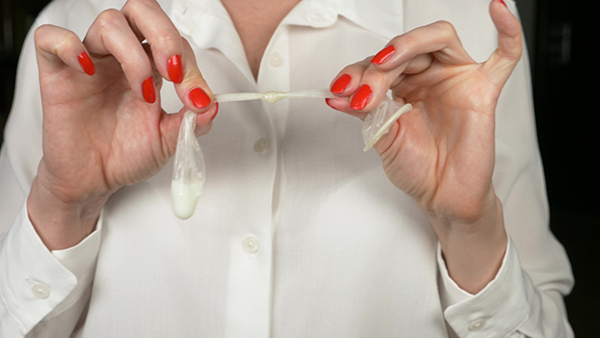Hormone-free contraception
A copper IUD is a hormone-free contraceptive that is inserted into the uterus. It creates an environment that prevents sperm from surviving and provides strong protection against pregnancy. Other contraceptives without hormones are condoms, pessaries and femidom. They prevent sperm from entering the uterus and are called barrier methods. Read more here about other forms of hormone-free contraception.
Read time: 3 m
Verified by Jenny Jansson
Certified midwife
Copper IUD
Works both as a long-term contraceptive and as an emergency method. A small, T-shaped insert that has a copper thread. The copper ions put the sperm out of action and prevent them from fertilising the egg. A copper coil is inserted and removed by a midwife or gynaecologist. It is completely hormone-free and can be a good alternative for women who experience side effects from hormones. Fertility returns to normal after it's removed.
+Advantages
You can have sex without worrying about getting pregnant. It can last for up to five years and be removed anytime. The copper coil can also work as emergency protection if it is inserted within five days after unprotected sex.
− Disadvantages
The copper coil does not protect against HIV/AIDS or venereal diseases. Some women experience irregular bleeding, headaches, pelvic pain or acne after the actual insertion. Women with copper coils may also experience heavier and longer bleeding with menstrual cramps. There is a small risk that the copper coil may be pushed out of position and become less effective.
Condom
A condom covers the penis during sex. It's usually made of latex.
+Advantages
Easy to use and protect against HIV/AIDS and venereal diseases.
− Disadvantages
If a condom is put on correctly it can split or break. Some people don't have the same, or, feeling of intimacy when they use condoms.
Pessary
A diaphragm is a barrier that stops the sperm from reaching the womb. It looks like a bowl-shaped, flexible disc and is made of latex or silicone. Pessaries must be tried and adapted individually, which is done by a midwife or gynaecologist. You handle the diaphragm yourself if necessary, it can be inserted into the vagina up to 24 hours before intercourse and must remain in place for at least six hours afterwards. Pessaries can be used even if you are breastfeeding, but sometimes they are not suitable for women who have given birth. Pessaries don't affect your period.
+Advantages
Can be used last-minute. Pessaries are hormone-free and can be an alternative for women who experience side effects from hormones.
− Disadvantages
The diaphragm does not protect against HIV/AIDS or venereal diseases.
It is less effective compared to, for example, a contraceptive implant or IUD, and should be used with a spermicide. Some women experience irritation and may have allergic reactions or a urinary tract infection. If the diaphragm stays in for too long, over 24 hours, there is a risk of toxic shock syndrome.
Femidom
A femidom is a condom for women, protection of very thin plastic or latex that you insert into the vagina yourself. Putting in a femidom isn't difficult but you might need to practise a few times. For a femidom to provide protection, it must stay in place throughout intercourse.
+Advantages
Protects against HIV/AIDS or venereal diseases. It is the only product that a woman can use to prevent sexually transmitted diseases. You can insert a femidom several hours before you have intercourse.
− Disadvantages
Requires some planning, Can be more expensive and difficult to get hold of than a condom.
Verified by Jenny Jansson
Certified midwife
More from Preggers
Hundreds of related articles, podcasts & more waiting for you in the Preggers app.
Download Preggers today.

